If “B” is your favorite letter, then consider this article on your “to-do” list of countries to visit. Each starts with the letter “B.” How many can you guess before reading through the article?
1. Bahamas
The Bahamas are an archipelago of Caribbean Islands off the Atlantic coast of Florida. They were formerly a British colony before achieving independence in 1973. The Bahamas are an immensely popular vacation destination, especially for Caribbean cruises. The country is politically stable and well-known for its pristine white beaches and warm, crystal-clear waters. Sheltered lagoons create spaces safe for amateurs to snorkel and be amazed at the colorful variety of fish, corals, and other marine life.
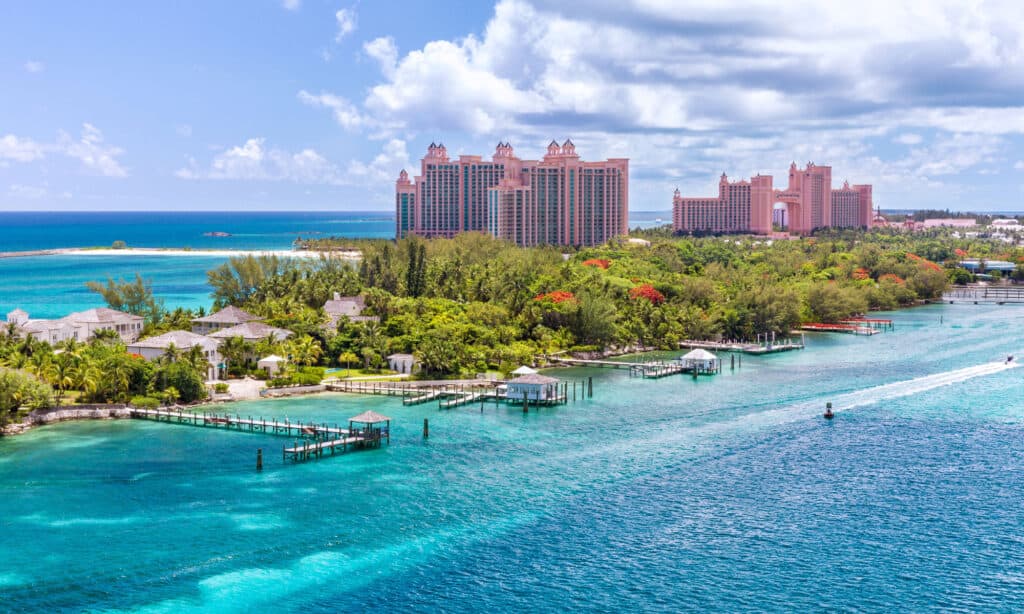
The Bahamas has white-sand beaches and turquoise waters
©iStock.com/poladamonte
2. Bahrain
Bahrain is an island nation in the Persian Gulf, just offshore of Saudi Arabia. It achieved independence from Great Britain in 1971. About half of Bahrain’s inhabitants are workers from foreign countries. Bahrain’s indigenous population is about 75% Shia Muslim but is ruled by a Sunni government aligned with Saudi Arabia and other Gulf Arab states that have tense relations with neighboring Iran. Like its neighbors, Bahrain has great oil and natural gas reserves, which it has used to build modern infrastructure and a futuristic skyline in Manama, the capital.

The skyline of Manama, the Bahraini capital, looks like a city from another world.
©PREJU SURESH/Shutterstock.com
3. Bangladesh
Bangladesh was part of the British colony of India until 1947 when India was partitioned into two countries: India and Pakistan. The Pakistani side was made up of West Pakistan and East Pakistan on opposite sides of the subcontinent, separated from one another by over 1,300 miles. Staying together as one country proved to be unsustainable, so East Pakistan fought a successful war of independence and emerged as the new country of Bangladesh in 1971. Even though it is not a large country, Bangladesh has a huge population of over 169 million people, which is about 20 million more than Russia! It is a well-watered, low-lying, agricultural country, but its geography does make it subject to catastrophic flooding during the annual monsoons, and puts it on the path of typhoons from the Indian Ocean that have caused incalculable damage to infrastructure and cost millions of people their lives.

Bangladesh is blessed, and cursed, with abundant water resources that give and take life.
©iStock.com/mathess
4. Barbados
Barbados is an island country in the Caribbean that was once a part of the British Empire but gained independence in 1966. Today it is acclaimed as a popular tourist destination. Some of the things that draw visitors are its year-round good weather, beautiful beaches, and warm, clear waters, its exuberant, joyful Calypso music and dance, high-quality rum production, and interesting history that includes some scandalous stories of swashbuckling piracy.
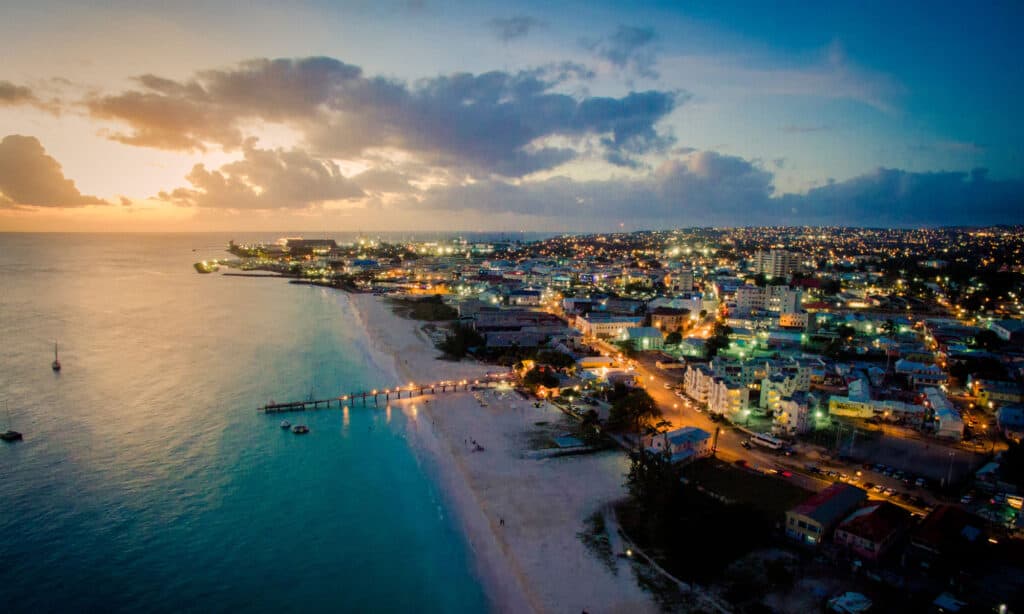
Barbados is known for its beaches, exuberant culture, rum, and pirate-laced history.
©iStock.com/Above Barbados
5. Belarus
Belarus is an independent country that was formerly part of the Russian Empire and the Soviet Union. It is wedged between Russia, Latvia, Lithuania, Poland, and Ukraine. The country has its own language, Belarussian, which is very similar to Russian, and most people in the country speak both languages. After World War II, the territory of Belarus was enlarged to include former regions of eastern Poland, and Poland was compensated with German territory to the west.
Along with the other republics of the Soviet Union, Belarus declared itself an independent country in 1990 but has remained under the dictatorship of pro-Russian President Alexander Lukashenko ever since. Lukashenko has cooperated with Russian President Vladimir Putin’s efforts to integrate Belarus increasingly with the Russian Federation, which many analysts believe may culminate in the annexation of Belarus by Russia. Belarus is especially strategically significant today as it has been used by Russia as a staging ground for military attacks on Ukraine.
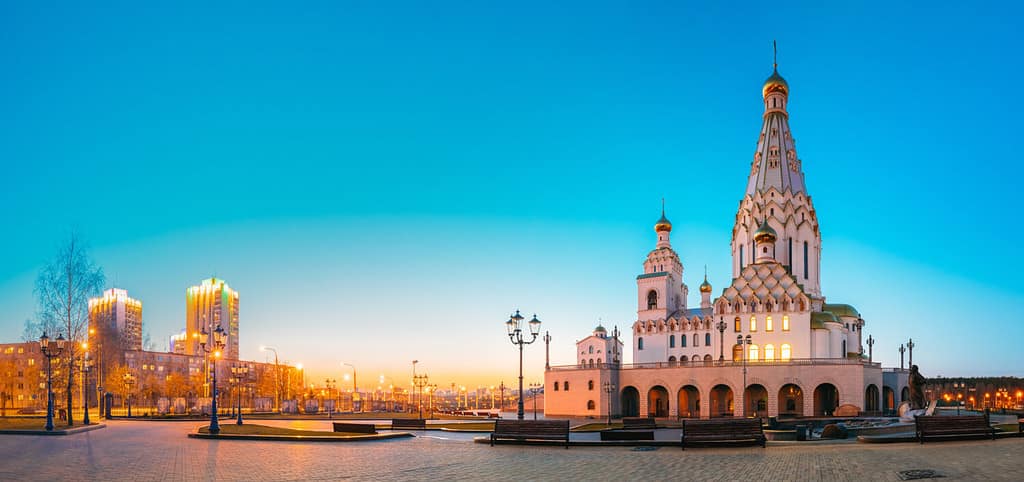
Minsk is the capital of Belarus. The majority religion of the country is Eastern Orthodox.
©Grisha Bruev/Shutterstock.com
6. Belgium
Belgium is located between the Netherlands, Germany, Luxembourg, and France. Its capital, Brussels, is also the headquarters of the European Union, so in that sometimes it is seen as the European capital. Belgium has historically been caught in the middle of conflicts between larger and more aggressive neighbors even when it tried to remain neutral. At various points in history, it has been part of the Spanish, French, Dutch, and German empires. As a result, the country is culturally mixed, with the northern region, Flanders, speaking Flemish (a dialect of Dutch), and the southern region, Wallonia, speaking French. These two regions do not always get along and there has been some periodic talk about splitting the country in two.
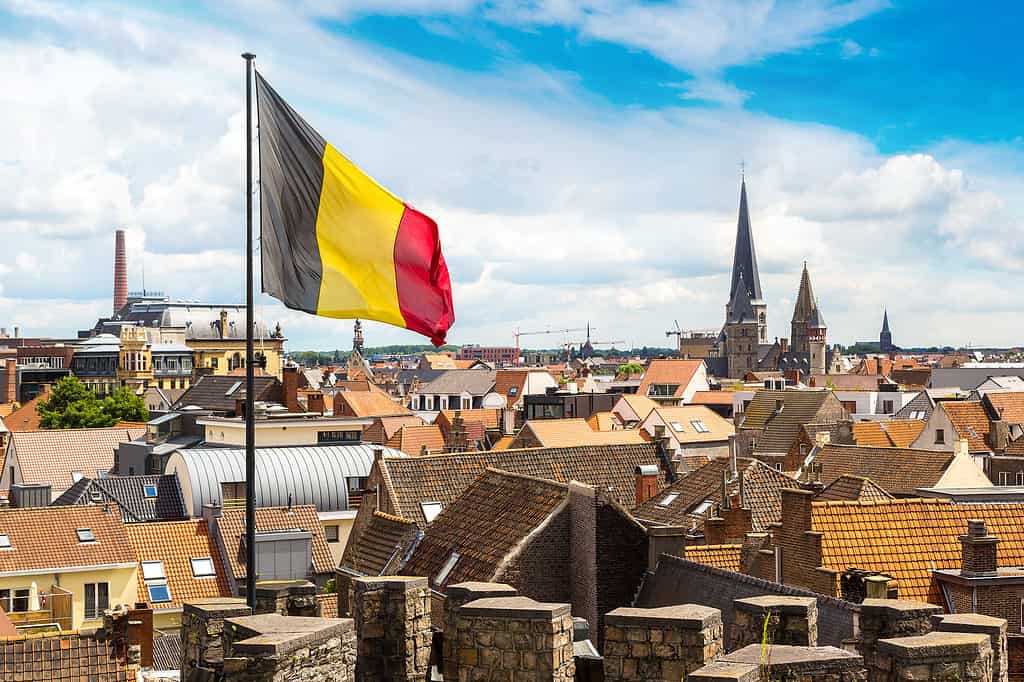
Belgium has a history of being caught in the middle of conflicts perpetrated by aggressive neighbors.
©Sergii Figurnyi/Shutterstock.com
7. Belize
Belize is the only English-speaking country in Central America, a legacy of its history as a British colony. It is located on the Atlantic coast, bordering Mexico to the north and Guatemala to its west. Belize is a popular destination for ecotourism, both in its tropical rainforest and offshore coral reef, one of the largest in the world. The country has numerous small lagoons that shelter diverse marine life. Belize is a very popular destination for sport fishing. Some of the popular species for anglers in Belize are tarpon, snook, marlin, sailfish, permit, bonefish, and snapper.
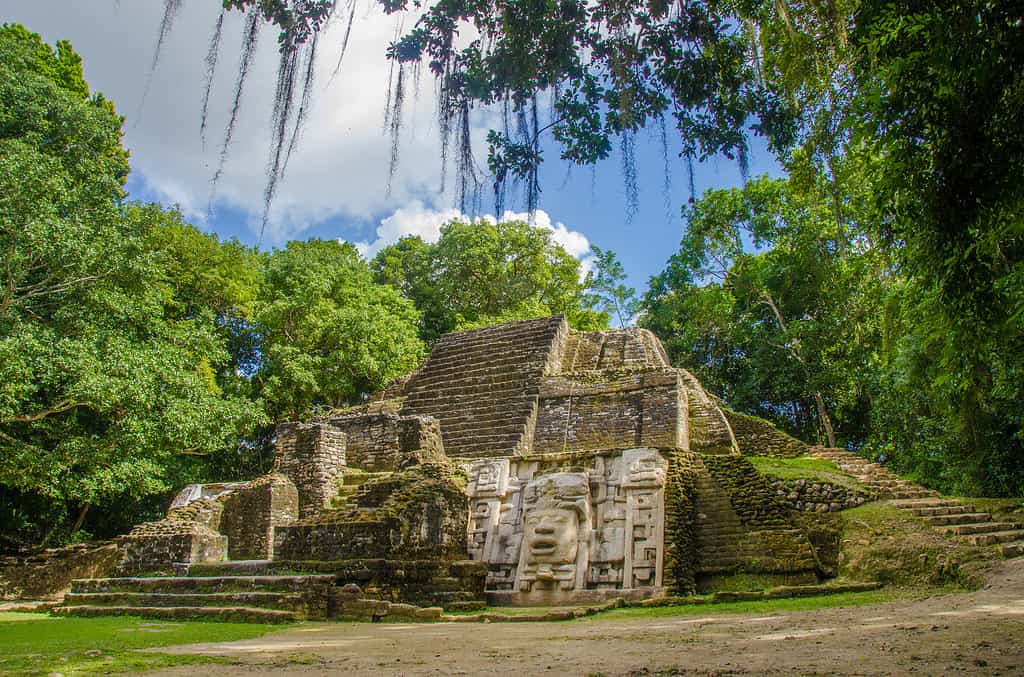
Mayan ruins lie deep in the forest of Belize.
©iStock.com/SimonDannhauer
8. Benin
Benin is a West African country that historically was a center of the powerful and wealthy African Kingdom of Dahomey. It was later colonized by the French. One consequence of this cultural contact was a blending of religious ideas from French Catholicism with indigenous African spirituality. This led to a set of beliefs and practices known today as “Voudon,” or more popularly, “Voodoo.” One of the most tragic elements of Benin’s colonial history was its involvement in the slave trade, with the port of Ouidah a major slave export site. Benin today has wildlife reserves with elephants, hippos, lions, and antelope.
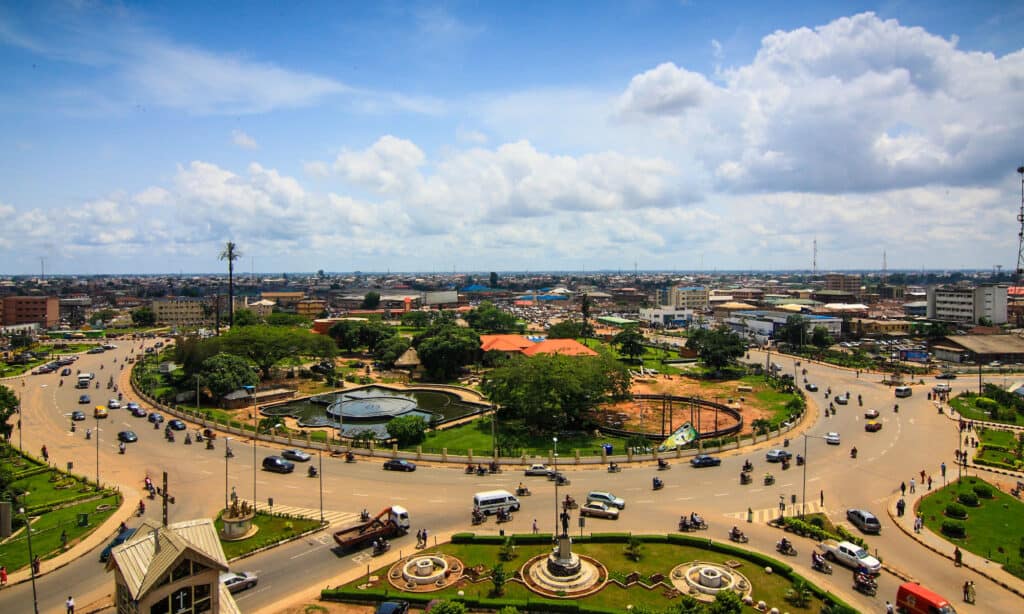
A roundabout in Benin City, the capital of the country.
©JERRY CHIDI/Shutterstock.com
9. Bhutan
Bhutan is a reclusive Buddhist kingdom in the Himalayan Mountains, tucked between Chinese-occupied Tibet to the north and India to the south. Bhutan’s flag is split diagonally between orange and yellow triangular fields, with a detailed depiction of a white dragon in the center where they meet. Bhutan strictly limits visits by outsiders and has rejected many modern conveniences to preserve its traditional way of life. Among the countries of the world, it frequently ranks at or near the top of surveys of the happiest and most content people in the world.
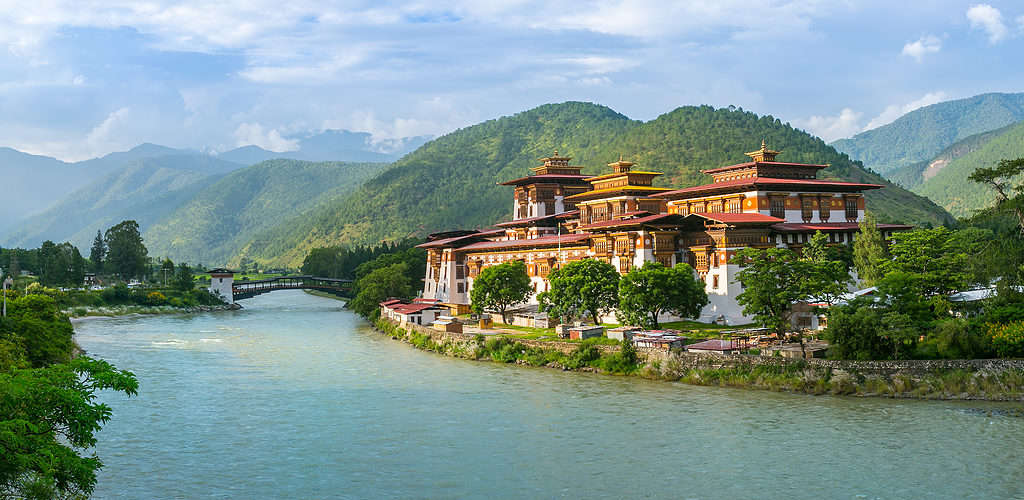
Scenic Punakha Dzong Monastery in Bhutan.
©Khanthachai C/Shutterstock.com
10. Bolivia
The nation of Bolivia is named for Simon Bolivar, a South American revolutionary hero who helped several countries in the region successfully fight for their independence from Spain after it was weakened by the Napoleonic Wars. Bolivia itself was involved in war with its neighbors after independence, losing territory to Paraguay and Chile – most notably, its access to the Pacific Ocean. Today it is a landlocked country high in the Andes mountains. Many of its people are descended from the Incans who ruled a powerful Andean empire before the arrival of Europeans. Indigenous Bolivians still keep guinea pigs, which were domesticated over 3,000 years ago, as a food source. Bolivia has been a leader in the indigenous rights movement to increase the representation and influence of the original ethnic groups of the region.
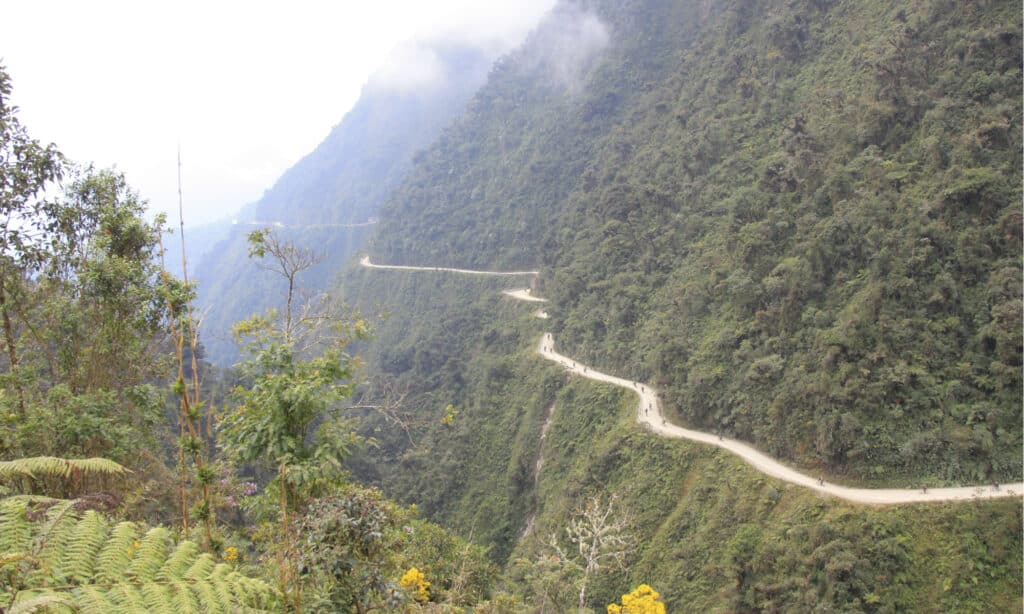
The narrow North Yungas Road in Bolivia claims the lives of between 200 and 300 people annually.
©electra/Shutterstock.com
11. Bosnia and Herzegovina
Bosnia and Herzegovina is the name of a Balkan country that was, in the past, part of the Ottoman Empire, the Austro-Hungarian Empire, Yugoslavia, and, in 1992, became an independent country. Its history has been fraught with division and violence. In fact, Sarajevo, a city in this country, was where World War I started after a Serbian nationalist assassinated a member of the Austrial royal family. Some of the most violent fighting and worst genocidal crimes of the Yugoslavian civil war took place there. The Dayton Peace Accords resulted in a division of the country and a power-sharing scheme between the major ethnic groups, but the substantial Serbian part of the country has a strong movement for independence for their region and possible annexation to Serbia.
Bosnia and Herzegovina has the smallest seacoast of any country in the world except Monaco. It’s only about 16 miles long, and the only town there is Neum. This little town of 3,000 people has begun to attract more tourists now that it has served as a location for the popular television series Game of Thrones.
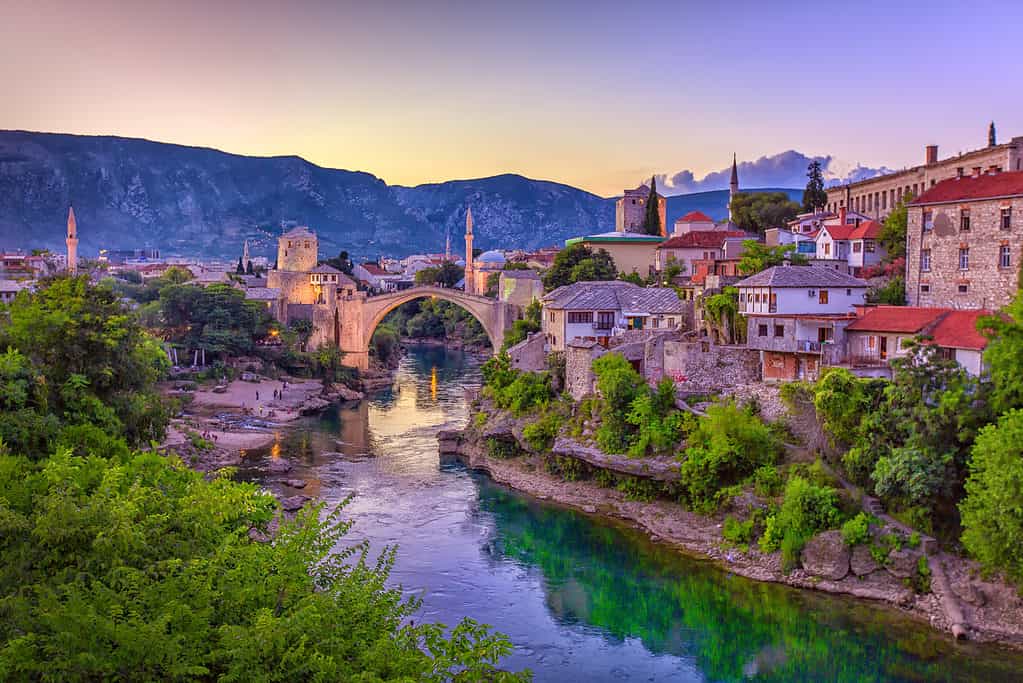
Destroyed during the Bosnian Civil War, this historic 16th-century bridge in Mostar, Bosnia and Herzegovina is a reconstruction of the original.
©iStock.com/Greg Sullavan
12. Botswana
Botswana in southern Africa, has rich natural resources such as its, water, and wildlife. The country itself is something of a rare diamond in the region and the world, in that it has maintained a politically stable democracy since its independence from Great Britain in 1966. Botswana has received international praise for its wildlife conservation efforts. This has helped make it an attractive destination for eco-tourists.

Diverse wildlife inhabits the well-watered vast Okavango Delta in Botswana.
©evenfh/Shutterstock.com
13. Brazil
Brazil is one of the largest countries in the world, both in land area and population. It is most recognized today as the home of the Amazon rainforest, the world’s largest and most diverse rainforest with large numbers of rare and vulnerable species. Deep in the Amazon, some people groups continue to live a hunting and gathering lifestyle, unchanged for thousands of years. Mining, poaching, wildfires, and deforestation for farming are major threats to this fragile ecosystem. A former colony of Portugal, Brazil’s language is Portuguese but its culture is a unique blend of European, Native American, and African influences.
Brazil today is part of an informal grouping of rising developing nations today known as BRICS: Brazil, Russia, India, China, and South Africa. These countries are not as fully developed as the world’s wealthiest countries. However, experts consider them emerging global powers because of their large GNPs, military power, land area, and population.
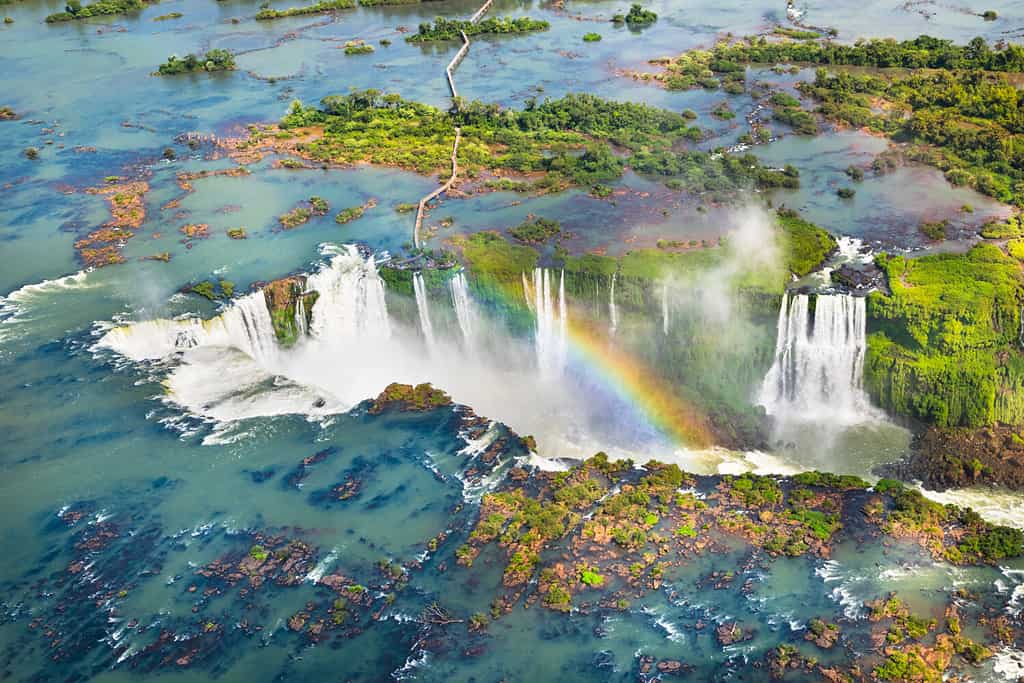
Along Brazil’s border with Argentina is the stunning Iguaçu Falls, one of the largest waterfall systems in the world.
©Nido Huebl/Shutterstock.com
14. Brunei
Brunei is a wealthy kingdom located on the island of Borneo. This is the only island in the world shared between 3 independent nations: Indonesia, Malaysia, and Brunei. The Sultan of Brunei is one of the wealthiest people in the world. Brunei itself has one of the highest standards of living in Southeast Asia. Its wealth flows mainly from its rich petroleum reserves. The government has invested this wealth in infrastructure, education, and healthcare, giving its citizens an affluent lifestyle.

The exquisite Sultan Omar Ali Saifuddin Mosque in Brunei at sunset.
©James Jiao/Shutterstock.com
15. Bulgaria
Bulgaria is a country on the Black Sea that borders Romania, Serbia, North Macedonia, Greece, and Turkey. It was a part of the Roman Empire, and later the Ottoman Empire, before achieving independence in 1908. After World War II, it came under the occupation of the Soviet Union. The Russians forced Bul;garia to adopt a communist government and become part of the Warsaw Pact alliance. As communism collapsed in the 1990s, the Bulgarian people replaced their government with a democratic one. Thereafter, they joined the European Union and the NATO military alliance. Bulgaria is primarily an agricultural country today, with beautiful mountains and views of the sea.
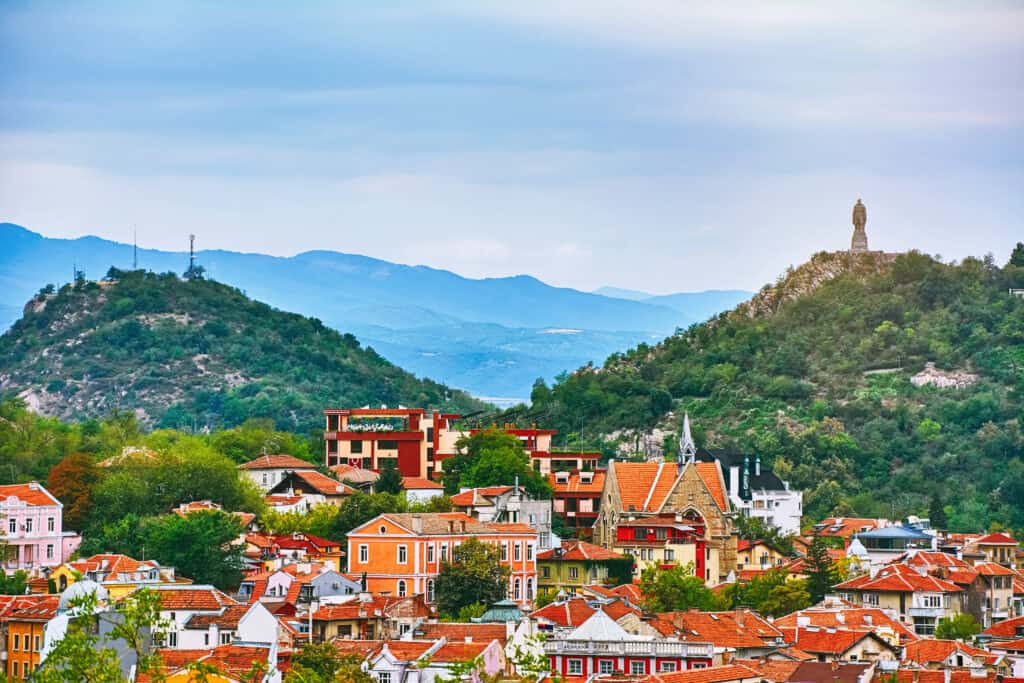
Plovdiv, Bulgaria is one of the oldest cities in the world.
©Sergej Razvodovskij/Shutterstock.com
16. Burkina Faso
Burkina Faso is a landlocked former French colony in West Africa. Formerly known as Upper Volta, Burkina Faso shares borders with Niger, Mali, Benin, Togo, Côte d’Ivoire, Ghana, and Guinea. This puts the country in a good position to trade with its neighbors but also creates danger for it as political instability in any of these countries can spill over the borders. France continues to hold a great deal of influence economically, politically, and militarily in its former colonies, which can be a stabilizing factor, but, critics charge, amounts to neocolonialism that operates to the disadvantage of African interests. French troops who were fighting terrorists in Burkina Faso left. France continues to maintain troops in neighboring Niger.
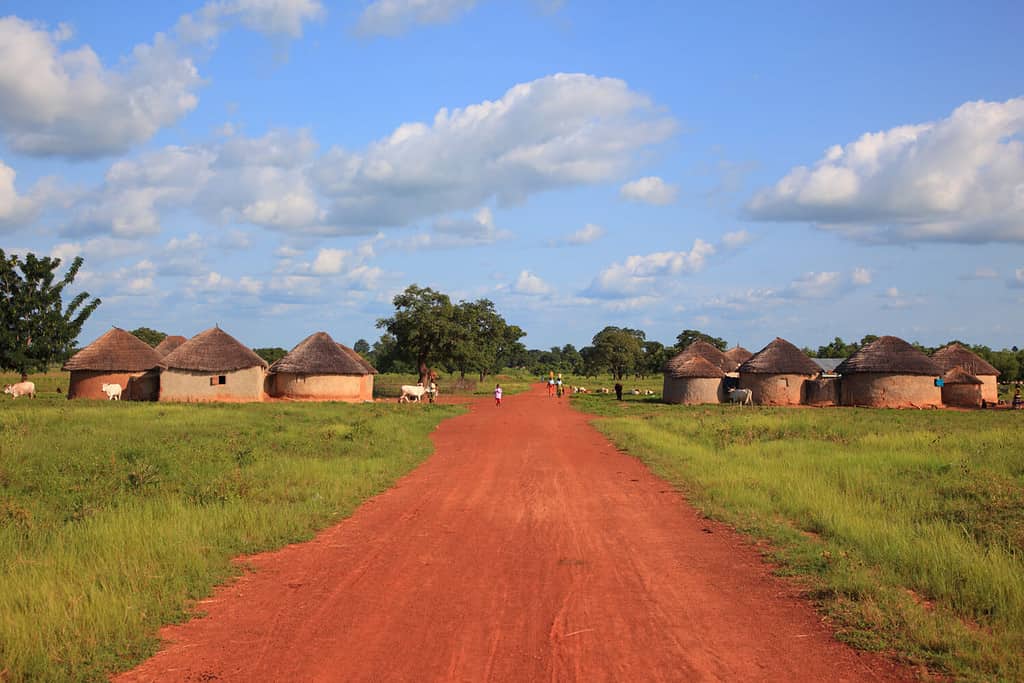
A traditional village in Burkina Faso, looking much as it might have looked centuries ago.
©Dmitry Trashchenko/Shutterstock.com
17. Burundi
Burundi is a small country on the eastern border of the vastly larger Democratic Republic of the Congo. Both countries were Belgian colonies and experienced ruthless exploitation by colonial overseers in the 19th and early 20th centuries. Two of the country’s main ethnic groups, the Hutu and Tutsi, do not get along. They have fought brutal wars with one another in Burundi, and notoriously, in neighboring Rwanda where mass genocides took place. Despite this unrest, Burundi remains a beautiful, ecologically diverse country. Its parks preserve species that are becoming rare in other parts of Africa. Burundi is landlocked but lies on the shore of Lake Tanganyika, a large and deep body of water.
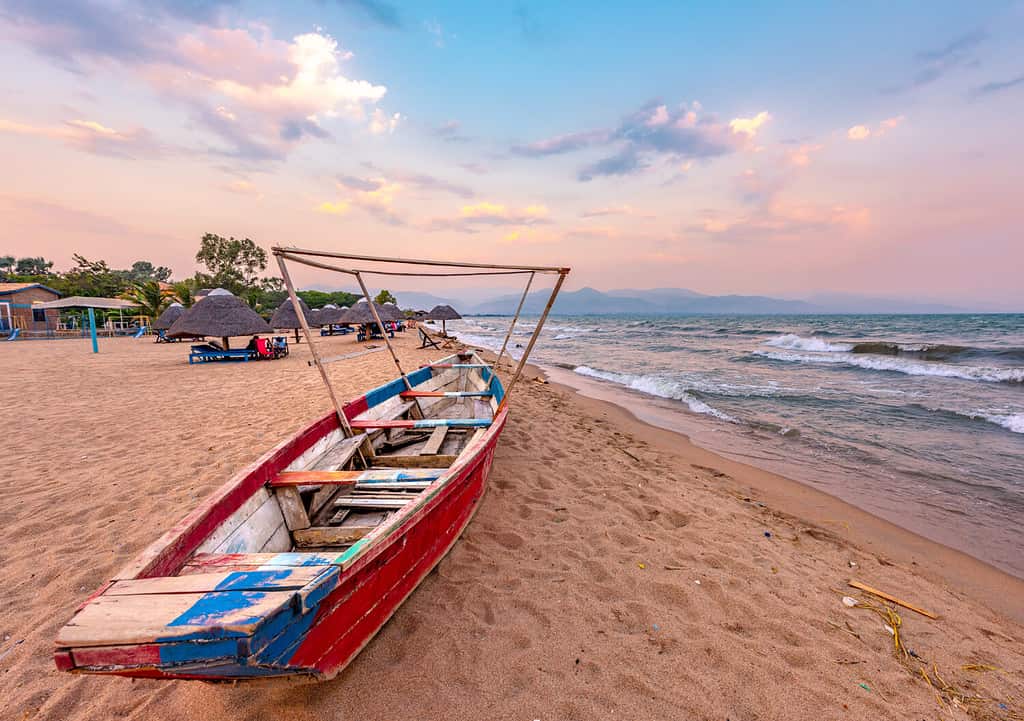
Lake Tanganyika has beautiful scenic beaches.
©mbrand85/Shutterstock.com
The Most Populated Country That Starts with B
Brazil is the most populated country that starts with B. Its population is close to that of Nigeria and Pakistan.
| Country | Population |
|---|---|
| Brazil | 216,000,000 |
| Bangladesh | 170,000,000 |
| Burkina Faso | 22,200,000 |
| Benin | 12,600,000 |
| Burundi | 12,800,000 |
| Bolivia | 12,000,000 |
| Belgium | 11,750,000 |
| Belarus | 9,200,00 |
| Bulgaria | 6,480,000 |
| Bosnia and Herzegovina | 3,320,000 |
| Botswana | 2,400,000 |
| Bahrain | 1,500,000 |
| Bhutan | 763,000 |
| Belize | 441,400 |
| Brunei | 440,000 |
| Bahamas | 397,000 |
| Barbados | 269,000 |
The Largest Country That Starts with B
Brazil is the largest country that starts with B in land area as well as population. Most of its people live in large cities in the southeastern coastal region. The country built a new capital, Brasilia, in the south-central interior. This was to draw more population and development to an underdeveloped area and to be more centrally located.
| Country | Land Area (sq. mi.) |
|---|---|
| Brazil | 3,287,956 |
| Botswana | 566,730 |
| Boliva | 424,165 |
| Burkina Faso | 105,869 |
| Belarus | 80,155 |
| Bangladesh | 51,703 |
| Benin | 43,484 |
| Bulgaria | 42,855 |
| Bosnia and Herzegovina | 19,767 |
| Bhutan | 14,824 |
| Belgium | 11,787 |
| Burundi | 10,747 |
| Belize | 8,867 |
| Bahamas | 5,359 |
| Brunei | 2,226 |
| Bahrain | 293 |
| Barbados | 166 |
The Oldest Country That Starts with B
Again, Brazil is the winner. Of the countries that start with B, it is the oldest, having gained its independence in 1822.
| Country | Independence |
|---|---|
| Brazil | 1822 |
| Bolivia | 1825 |
| Belgium | 1830 |
| Bhutan | 1910 |
| Bulgaria | 1908 |
| Benin | 1960 |
| Burkina Faso | 1960 |
| Burundi | 1962 |
| Botswana | 1966 |
| Barbados | 1966 |
| Bangladesh | 1971 |
| Bahrain | 1971 |
| Bahamas | 1973 |
| Belize | 1981 |
| Brunei | 1984 |
| Belarus | 1990 |
| Bosnia and Herzegovina | 1992 |
The Youngest Country That Starts with B
Well, it’s impossible for Brazil to be both the oldest and the youngest country that starts with B. So in this category, they lose to Bosnia and Herzegovina, which became its own country in 1992.
| Country | Independence |
|---|---|
| Bosnia and Herzegovina | 1992 |
| Belarus | 1990 |
| Brunei | 1984 |
| Belize | 1981 |
| Bahamas | 1973 |
| Bahrain | 1971 |
| Bangladesh | 1971 |
| Barbados | 1966 |
| Botswana | 1966 |
| Burundi | 1962 |
| Burkina Faso | 1960 |
| Benin | 1960 |
| Bulgaria | 1908 |
| Bhutan | 1910 |
| Belgium | 1830 |
| Bolivia | 1825 |
| Brazil | 1822 |
Summary of 17 Countries That Start With B
| Number | Country with a B |
|---|---|
| 1 | Bahamas |
| 2 | Bahrain |
| 3 | Bangladesh |
| 4 | Bermuda |
| 5 | Belarus |
| 6 | Belgium |
| 7 | Belize |
| 8 | Benin |
| 9 | Bhutan |
| 10 | Bolivia |
| 11 | Bosnia and Herzegovina |
| 12 | Botswana |
| 13 | Brazil |
| 14 | Brunei |
| 15 | Bulgaria |
| 16 | Burkina Faso |
| 17 | Burundi |
The photo featured at the top of this post is © SN VFX/Shutterstock.com
Thank you for reading! Have some feedback for us? Contact the AZ Animals editorial team.







